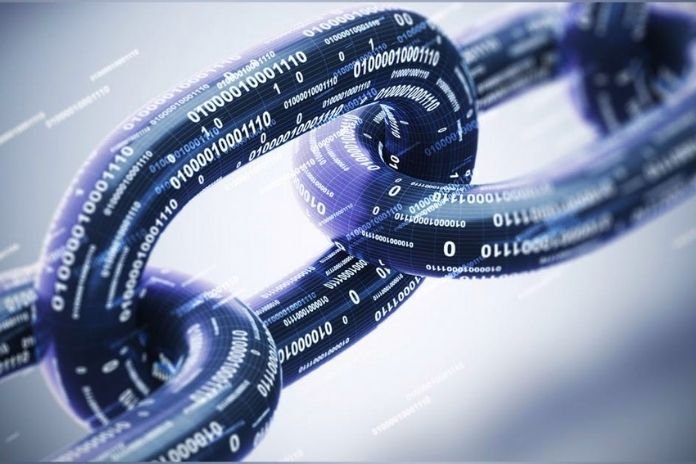Blockchain: Hype Or Overhyped?

Blockchain and bitcoins are terms that are increasingly finding their way into our everyday work. We use it, but when you get into the details, many people realize that there is still no clear picture of how this new technology works or what it can be used for.
But is it really necessary to understand exactly how the blockchain works? How many people understand the TCP/IP protocol, which is the foundation of the Internet, but use and understand the Web in general? The essential here is to consider the “for what” rather than the “how,” which also makes it significantly easier to access this not uncomplicated topic.
Bitcoins are probably the central topic when describing the blockchain introductory – at least measured by its media presence. To simplify the distinction between bitcoins and blockchain, the Internet can again be used to compare Bitcoin runs on the blockchain, just as e-mail runs on the Internet. Therefore, the blockchain is the technology or the technical process that enables cryptocurrencies, such as Bitcoins. However, the exciting and essential thing here is that the blockchain is not just for bitcoins or other cryptocurrencies, but can be used more universally.
Very much simplified, it is a technology that, via a decentralized system, carries out verified and publicly sequenced transactions. In the case of cryptocurrencies, you can imagine a banknote that gets a personal signature from everyone who holds it in their hands, with the date and time they received the note. The signatures are checked for authenticity by a decentralized system of computers. This happens in a technical voting procedure, which confirms the verification as soon as the simple majority of the plan agrees to the authenticity. This verification process is called a “block,” Based on the timestamp, a chronological chain of blocks is formed, called a “blockchain.”
Usage Of Blockchain
The special thing here is, on the one hand, the transparency – anyone can look at this blockchain – and on the other hand, the omission of a central unit – such as a bank – which checks the authenticity. This process is relatively simple and, therefore, quick and inexpensive. Transactions can be carried out at a much higher speed. For example, a bitcoin transaction takes just under 10 minutes, while a bank transfer takes at least one business day.
Bitcoins as a digital currency behave in the same way as an existing currency. The bill can be viewed as a kind of value proposition between two parties: you give me a commodity with a precise value, and I give you that value in return in the form of a cash note. There is, therefore, a purchase agreement between two parties – a transaction with a clearly defined framework. Since transactions verified chronologically in the blockchain are stored, the idea of also showing transactions other than digital money in it is not far off: e.g., a classic contract. These so-called “smart contracts” are ultimately nothing more than agreements between the parties stored in the blockchain for automated execution. Just as with the transaction of means of payment, other transactions can also be selected, such as automatic interest accruals for mortgages or the processing of license fees – the areas of application here are diverse.
Thinking one step further, the property could also be mapped in the blockchain (then called “smart property”). Below is a mean property whose ownership is controlled via the blockchain using contracts. But where is the added value here? Imagine a house that currently has to be registered in the land register by recording much information. Suppose you now want to buy the house. In that case, there is a relatively complex examination procedure in advance to determine whether there are mortgages, what rights and obligations exist, whether the seller is the owner, which company installed the windows, applied the plaster, etc. Consequently, buying this house is always associated with a certain risk since he may be missing essential information. For this reason, lawyers and notaries are commissioned to define regulations for the worst case.
If this house were now in the blockchain, this information asymmetry would no longer necessarily exist since all transactions that happen around the house are verified, stored chronologically, and can be viewed by everyone. The transparency of the blockchain consequently leads to faster, more secure, and more informative goods processing, which can fundamentally change the basis of our economic cooperation.
Of course, the blockchain can also be used in many other areas since virtually every transaction can be mapped. This ranges from political activities (“blockchain governance”) to apps (decentralized apps – “daps”). Due to the universal approach, one is now inclined to use the blockchain in every area since it undoubtedly offers new possibilities. However, in my view, not every area of application is suitable for doing this. This is partly for technical reasons, but also partly for economic reasons.
The transparency of the blockchain can be harmful in certain areas; for example, personal data should not be publicly visible, as is the case with profiles or identities. Although measures can be used to hide them, another central issue arises from this: The blockchain is faster and easier compared to many processes, such as money transactions, but this argument does not stand up to every comparison. Or, to put it more simply: waiting 10 minutes for a bank transaction is great; waiting 10 minutes for my front door to be opened is less. Consequently, the procedural complexity must be taken into account when deciding on the area of application of the blockchain.
